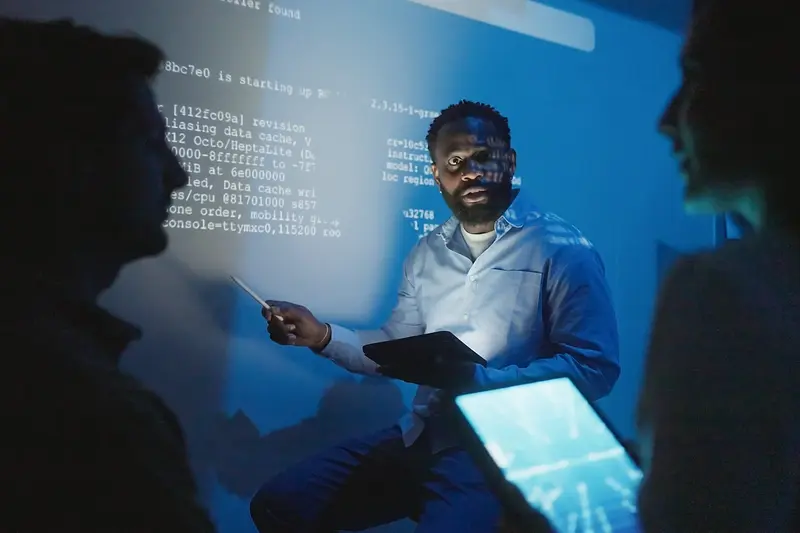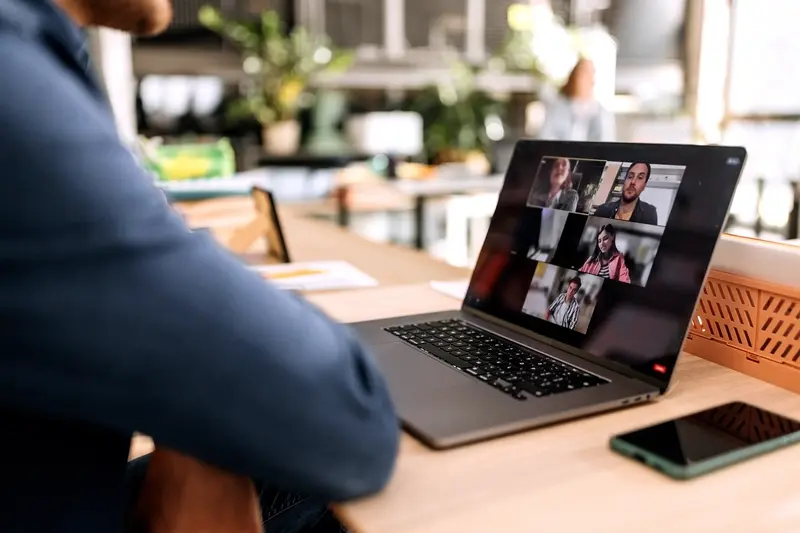How Do You Ensure Quality When Your Development Team Is Remote?
Remote work has completely changed how we build mobile apps—and I mean completely. What used to be a team of developers sitting around the same table has turned into talented people scattered across different countries, time zones, and coffee shops. But here's the thing that keeps many project managers up late: how do you make sure the quality doesn't suffer when your team is spread out like this?
The short answer is that remote mobile app development can produce brilliant results, but only if you get your processes right. I've worked with remote teams for years now, and the difference between a successful project and a disaster often comes down to how well you handle quality assurance and team management from day one. When developers are working from their home offices instead of yours, you can't just walk over and check their progress or spot problems before they snowball.
The biggest mistake companies make with remote development is assuming that good developers will automatically produce good results without proper structure and oversight.
Quality assurance becomes even more important when your team is distributed because small issues can quickly turn into big problems if they're not caught early. You need systems that work across distances—proper communication channels, clear standards that everyone understands, and testing protocols that don't rely on someone being physically present. The good news is that with the right approach, remote teams often deliver higher quality mobile apps than traditional in-house teams. They just need the right framework to make it happen.
Setting Clear Standards for Remote Mobile App Development
When your development team is scattered across different locations, having clear standards becomes absolutely critical. I've worked with remote teams for years now, and the projects that succeed are always the ones where everyone knows exactly what's expected of them from day one.
Think of standards as your team's rulebook—without them, you'll end up with code that looks like it was written by five different people (which it probably was). Setting these standards early saves you from headaches later on, trust me on this one.
Code Standards That Keep Everyone Aligned
Your coding standards should cover the basics: naming conventions, file structure, commenting requirements, and code formatting. Don't overcomplicate it though. Simple, consistent rules work better than complex ones that nobody follows.
- Establish clear naming conventions for variables, functions, and files
- Define your project's folder structure and stick to it
- Set minimum requirements for code comments and documentation
- Choose formatting rules and use automated tools to enforce them
- Create templates for common components and features
The key is getting your entire team to agree on these standards before any serious coding begins. Once development is underway, changing standards becomes much harder—and more expensive.
Quality Gates That Actually Work
Quality gates are checkpoints where work gets reviewed before moving forward. For remote teams, these become your safety net. Set up automatic checks that run when code gets submitted, and make sure nothing passes through without proper review.
Document everything clearly so new team members can understand your standards quickly. Remember, what seems obvious to you might not be obvious to someone joining your project halfway through.
Communication Tools and Daily Check-ins That Actually Work
When your mobile app development team is scattered across different locations, staying connected becomes the backbone of quality assurance. I've seen teams fall apart simply because they weren't talking to each other properly—and I've also watched remote teams deliver outstanding mobile apps because they got their communication right from day one.
The key isn't using every communication tool available; it's about picking the right ones and using them consistently. Slack works brilliantly for quick questions and team updates, whilst video calls through Zoom or Microsoft Teams are perfect for those moments when you need to see faces and have proper discussions about complex features or bugs.
Daily Stand-ups That Don't Waste Time
Your daily check-ins should be short and focused. Each team member shares three things: what they completed yesterday, what they're working on today, and any blockers they're facing. That's it. No long explanations, no solving problems on the spot—save those for separate meetings.
Keep daily stand-ups to 15 minutes maximum. Any longer and people start switching off, which defeats the purpose entirely.
Tools That Keep Everyone Connected
Here are the communication tools that actually make a difference for remote mobile app teams:
- Slack or Discord for instant messaging and file sharing
- Zoom or Google Meet for video calls and screen sharing
- Asana or Trello for project updates and task management
- GitHub or GitLab for code-related discussions
- Loom for recording quick video explanations of bugs or features
The secret sauce is making sure everyone knows when to use which tool. Quick questions go in Slack, complex discussions happen over video, and all project updates get logged in your chosen project management platform. This structure prevents important information from getting lost and keeps your remote team management smooth.
Code Reviews and Testing Protocols Your Team Will Follow
Code reviews can make or break your remote development project—I've seen teams fall apart because they skipped this step, thinking they could save time. The reality is quite different. When your developers are scattered across different locations, having a solid code review process becomes your safety net against bugs, security issues, and code that nobody else can understand six months later.
Your remote team needs a clear review process that everyone follows religiously. Start with pull requests—every single piece of code should go through at least one other developer before it reaches your main codebase. No exceptions, not even for small fixes. Set up automatic checks that run before any human even looks at the code; these catch basic syntax errors and style issues so your reviewers can focus on the important stuff like logic flaws and security vulnerabilities.
Testing That Actually Catches Problems
Unit tests should cover at least 80% of your codebase—anything less and you're playing with fire. Your remote developers need to write tests alongside their code, not afterwards when they've forgotten why they wrote certain functions. Integration tests come next; these check that different parts of your app work together properly. Don't forget automated UI testing either—it's tedious to do manually and remote teams often skip it when they're rushing to meet deadlines.
Making Reviews Constructive, Not Confrontational
Remote code reviews can feel impersonal and harsh. Encourage your team to explain their suggestions rather than just pointing out problems. "This function is too long" becomes "Breaking this into smaller functions would make it easier to test and debug." The goal is improving code quality while keeping team morale high—something that's much harder to manage when you can't have a quick chat by someone's desk.
Managing Time Zones and Keeping Everyone Accountable
Time zones are probably the biggest headache when managing a remote mobile app development team. I've worked with developers spread across continents—some starting their day as others are winding down. The trick isn't fighting the time differences; it's making them work for you.
Start by mapping out your team's working hours and finding those sweet spots where everyone overlaps. Even two hours of shared time can be golden for important discussions about your mobile app's architecture or urgent bug fixes. Outside these windows, asynchronous communication becomes your best friend.
Setting Clear Expectations Upfront
Every team member needs to know exactly what's expected of them and when. Create a simple system where people update their progress before logging off—whether that's through your project management tool or a quick message in your team chat. This way, someone in a different time zone can pick up where they left off without missing a beat.
The biggest mistake teams make is assuming everyone understands what accountability looks like in a remote setting—you need to spell it out clearly from day one
Making Accountability Natural
Don't micromanage, but do create systems that naturally encourage responsibility. Weekly sprint reviews, daily stand-ups (even if they're recorded videos), and clear deadlines help maintain momentum. For quality assurance testing, having team members in different zones actually works brilliantly—bugs can be found and fixed around the clock. The key is making sure handovers between time zones are smooth and well-documented, so your mobile app development never stalls because someone's asleep.
Building Trust When You Can't See Your Developers
Trust is funny when it comes to remote development teams. You can't pop over to someone's desk to see what they're working on, and you definitely can't gauge their mood from body language during a video call where half the team has their cameras off. But here's the thing—trust in remote teams isn't about surveillance; it's about creating systems that make everyone feel confident about the work being done.
Start with Small Wins and Build Up
When you're working with a new remote team, begin with smaller tasks that can be completed and reviewed quickly. This isn't about testing people (well, not entirely), but about establishing a rhythm of delivery and feedback. Each successful handoff builds confidence on both sides. Your developers learn what you expect, and you see their work style and quality standards in action.
Regular code commits with clear messages become your window into daily progress. When developers push code frequently with descriptive comments, you can see exactly what's being built without breathing down anyone's neck. It's transparency without micromanagement, which remote teams desperately need to function well.
Make Work Visible Through Smart Tools
Project management tools aren't just for ticking boxes—they're trust-building machines when used properly. When tasks move through clear stages and everyone can see who's working on what, trust develops naturally. Developers feel ownership over their work, and project managers get visibility without having to constantly ask for updates.
The magic happens when your team starts using these tools proactively rather than because they have to. When developers update their own progress and flag issues before they become problems, you know you've got a team that's genuinely invested in the project's success.
Documentation and Knowledge Sharing Across Distance
When your mobile app development team is spread across different locations, keeping everyone on the same page becomes a real challenge. You can't just pop over to someone's desk to ask a quick question or check how they solved that tricky bit of code. That's where proper documentation becomes your best friend—and I mean proper documentation, not just a few scribbled notes that only make sense to whoever wrote them.
Good documentation for remote teams needs to be detailed enough that someone who's never worked on your mobile app before could pick it up and understand what's happening. This means writing clear explanations of your code, keeping track of design decisions, and noting down any quirks or workarounds you've discovered along the way. When your quality assurance team is testing features, they need to know exactly what they're looking for and how things should behave.
Making Knowledge Stick Around
The biggest risk with remote team management is losing knowledge when people leave or move to different projects. Everything lives in people's heads instead of being written down somewhere everyone can access. Your mobile app project shouldn't fall apart because one person forgot to share the login details for a testing environment or didn't document how a particular feature works.
Create a shared workspace where all project documentation lives—whether that's Notion, Confluence, or even a well-organised Google Drive. The tool matters less than making sure everyone knows where to find information and how to keep it updated.
What Actually Needs Documenting
You don't need to document every single line of code, but you do need to capture the important stuff. API documentation, setup instructions, testing procedures, and any custom tools or processes your team uses. Keep it simple and update it regularly—there's nothing worse than following documentation that's six months out of date.
- Setup guides for new team members joining the project
- API documentation with clear examples
- Testing procedures and expected outcomes
- Design decisions and the reasoning behind them
- Known issues and their workarounds
Quality Assurance Testing with a Distributed Team
Testing mobile apps with a remote team sounds like it should be straightforward—but it's actually where most distributed development projects start to wobble. I've seen perfectly good apps fail because the testing process fell apart when team members were scattered across different locations and time zones.
The biggest challenge isn't the testing itself; it's making sure everyone knows what they're testing and how to report what they find. When your QA team is remote, you can't just walk over to someone's desk and show them a bug. You need rock-solid documentation that leaves no room for confusion.
Setting Up Your Remote Testing Framework
Start with a shared testing environment that everyone can access. Cloud-based testing platforms work brilliantly here because your team can test on real devices without needing physical hardware in every location. Create detailed test cases that spell out exactly what to check, what the expected result should be, and how to document any issues.
Your bug reporting process needs to be bulletproof. Screenshots aren't enough—you need screen recordings, device information, and step-by-step reproduction instructions. I always tell teams to assume the person reading the bug report has never seen the app before.
Coordinating Testing Across Time Zones
Time zones can actually work in your favour if you plan properly. While your developers in one location are fixing bugs, your testers in another time zone can be finding new ones. The key is having a clear handover process so nothing gets lost between shifts.
Set up automated testing for the basics—login flows, core features, performance checks. This gives your human testers more time to focus on the complex stuff that machines can't catch. Regular testing calls help keep everyone aligned, but don't overdo it. Too many meetings kill productivity. Learning from successful app development companies can provide valuable insights into streamlining your testing processes while maintaining quality standards.
Conclusion
Building quality mobile apps with a remote development team isn't just possible—it's happening successfully every day across thousands of companies worldwide. The key isn't trying to replicate an office environment online; it's about creating something better suited to how distributed teams actually work.
What we've covered in this guide comes down to three main areas: structure, communication, and trust. You need clear standards that everyone understands, regular check-ins that keep projects moving forward, and processes that catch problems before they become expensive mistakes. The team management side is just as important as the technical bits—maybe more so.
Remote mobile app development teams often produce higher quality work than their office-based counterparts. They have fewer distractions, more focused time for complex coding tasks, and access to talent that geography would otherwise put out of reach. But this only works when you've got the right systems in place.
Quality assurance becomes more systematic when you can't just walk over to someone's desk. Documentation gets better when it has to be written down properly. Code reviews become more thorough when they're the primary way team members see each other's work. These aren't compromises—they're improvements that benefit everyone involved.
The mobile app industry continues growing, and remote development teams are now the norm rather than the exception. Companies that master these practices early will have a significant advantage over those still trying to force old office-based processes into a distributed world.
Share this
Subscribe To Our Learning Centre
You May Also Like
These Related Guides

What Questions Should You Ask Your Development Team About Code Reviews?

How Do You Manage A Remote App Development Team Effectively?



